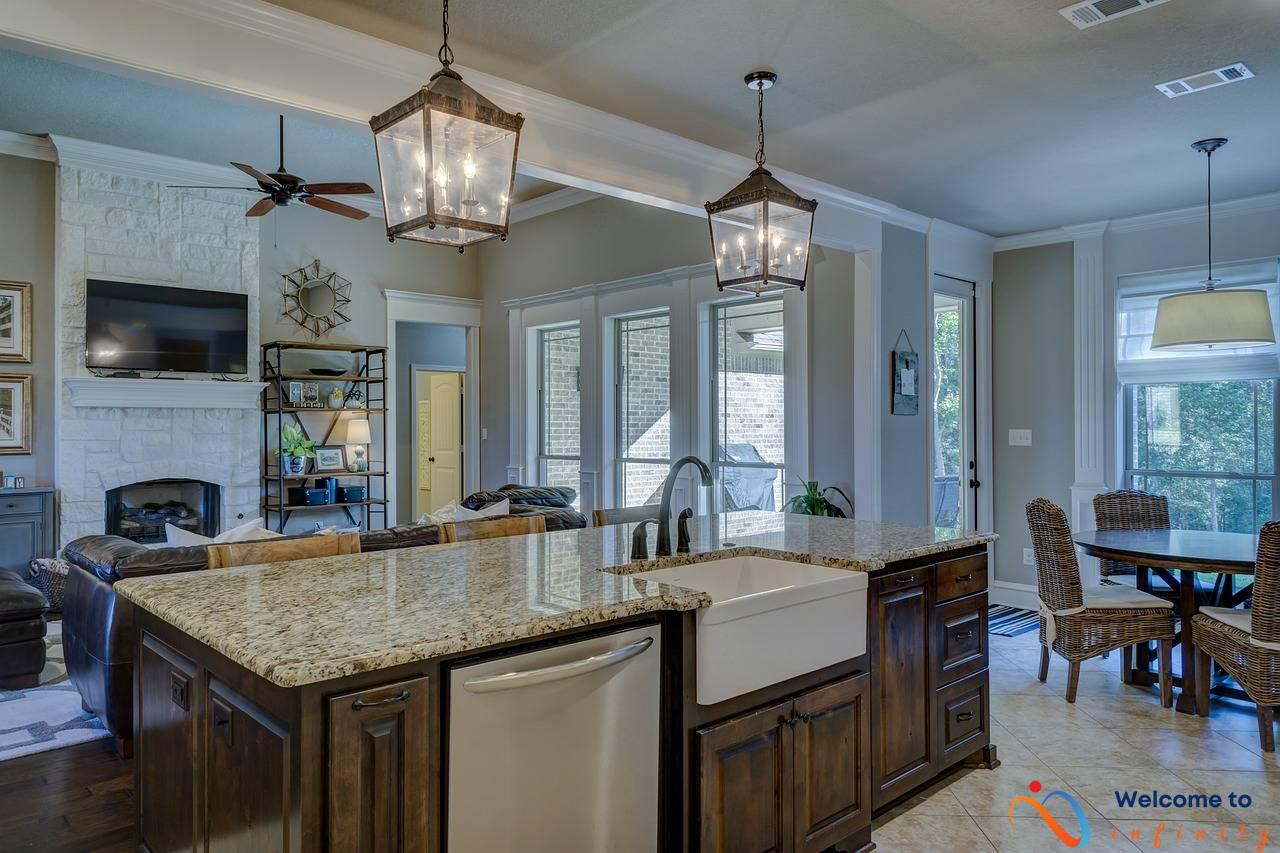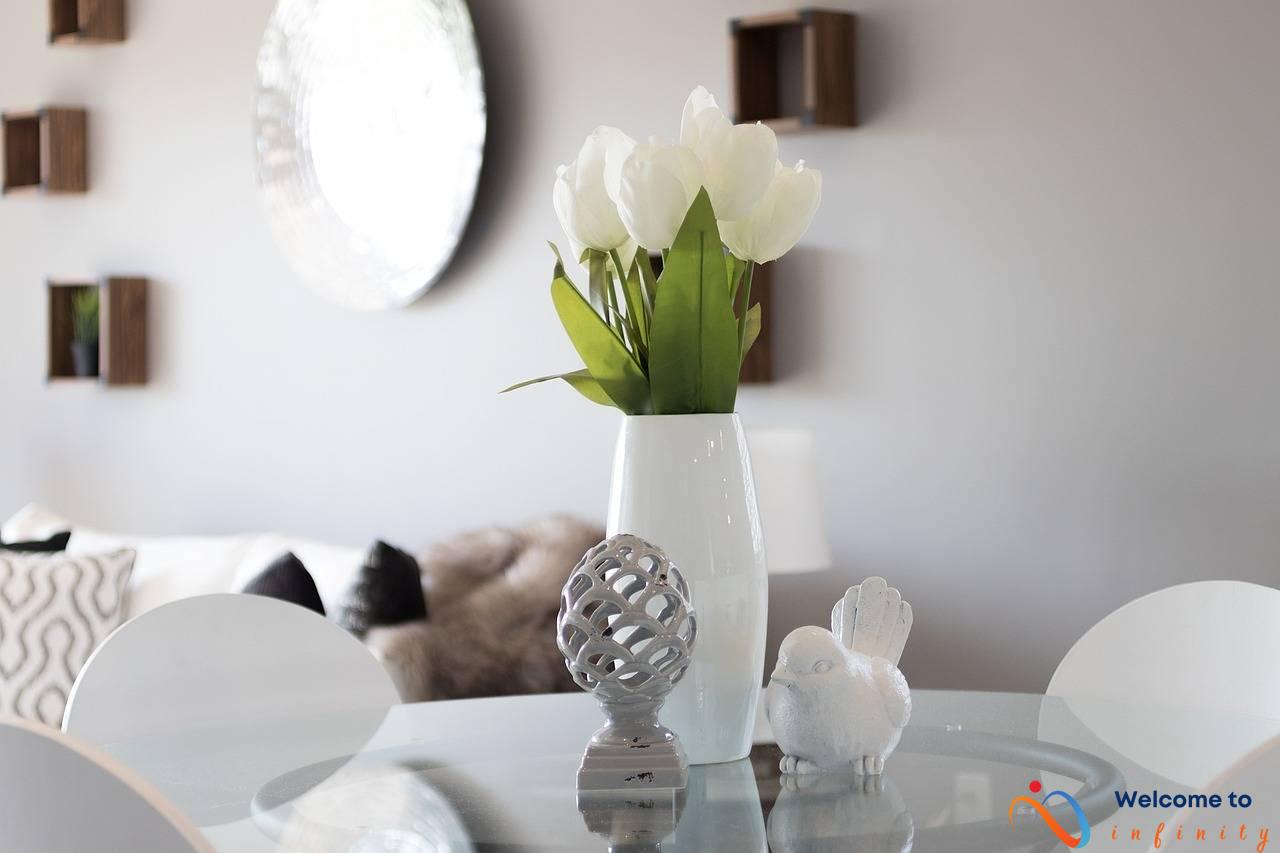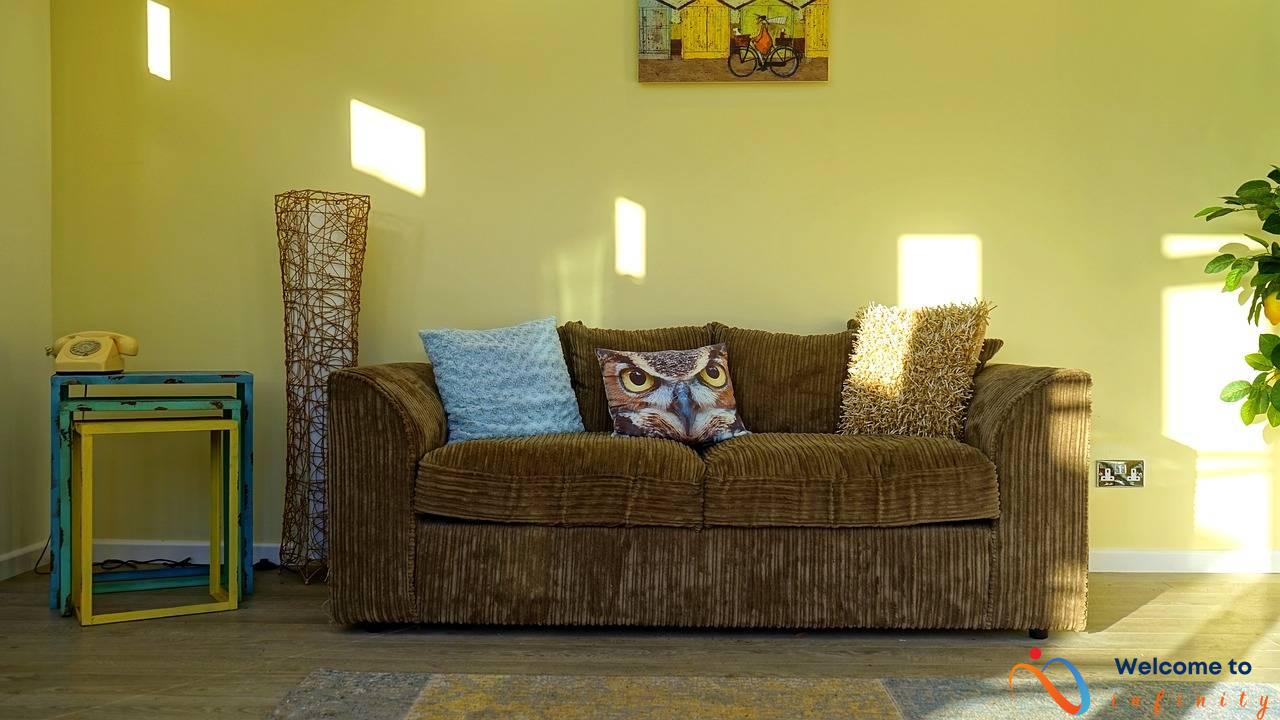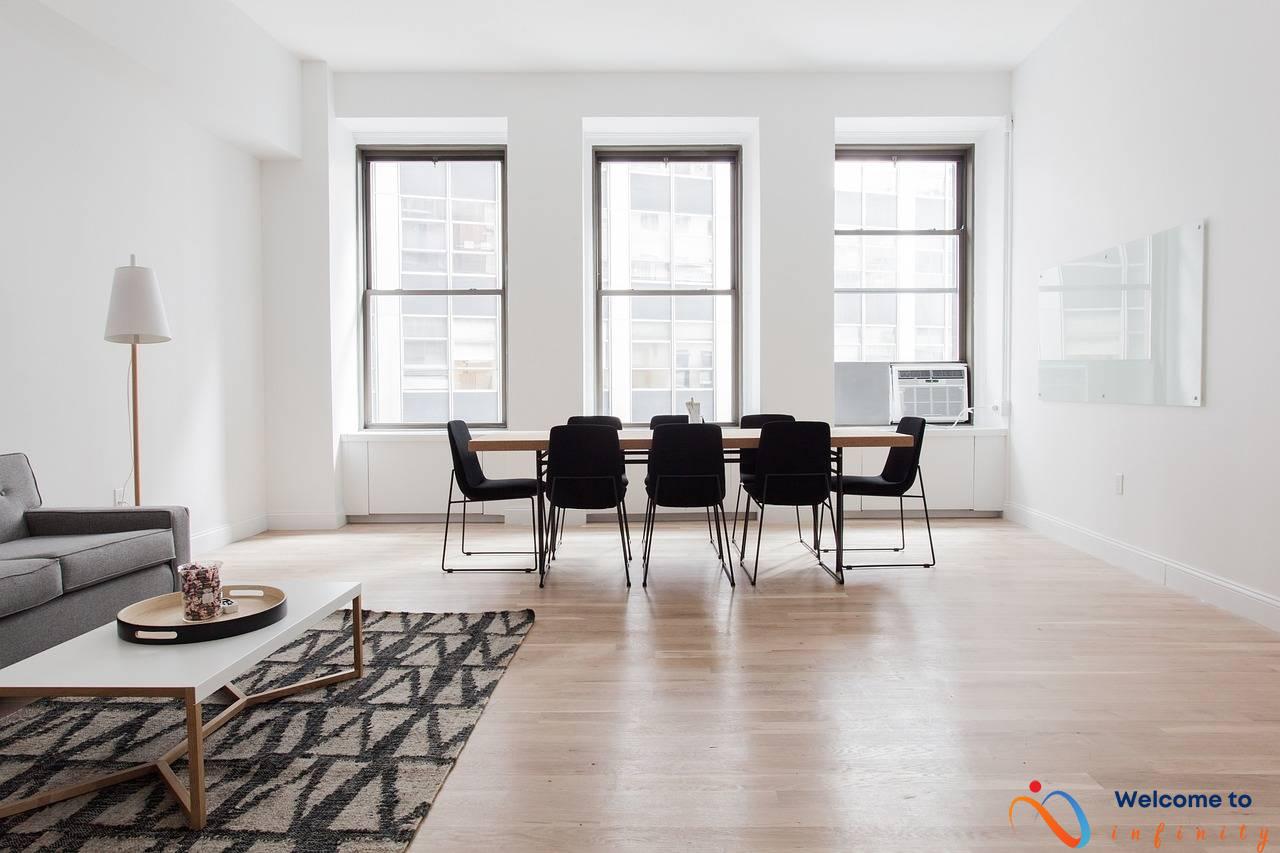In today's society, we are constantly bombarded by stimuli, from the never-ending scrolling on our phones to the cluttered spaces in our homes. With so much going on around us, it's easy to become overwhelmed and disconnected from what truly matters. This is where minimalist decor comes in, offering a visual respite and a path towards a more mindful and meaningful life. By simplifying our surroundings, we can create a sense of calm and cultivate a greater appreciation for the beauty in simplicity.
Minimalist decor has many benefits, including reducing stress and anxiety, enhancing creativity, and improving mental clarity. With fewer distractions in our space, we are better able to focus our energy on what truly matters and find a sense of peace in our day-to-day lives. Additionally, minimalism encourages us to be intentional with our choices and possessions, helping us to live a life that aligns with our values and priorities.
- Minimalist decor brings visual calm to our surroundings
- It helps us to cultivate a more mindful and meaningful life
- We are able to reduce stress and anxiety with a minimalist approach
- We can find a sense of peace in our day-to-day lives
- Minimalism encourages us to be intentional with our choices and possessions
- We can live a life that aligns with our values and priorities through minimalism
Adopting a minimalist decor style is an excellent way to create a peaceful and tranquil atmosphere in your home. By decluttering, simplifying color palettes, and choosing functional, sustainable furnishings, you can achieve a minimalist aesthetic that reflects your personal preferences and style. By embracing minimalism, you can create a space that brings you joy and helps you live a more intentional, fulfilling life.
The benefits of minimalist decor
The minimalist decor style has numerous benefits to offer, especially in the current fast-paced world. Here are some advantages of adopting a minimalist approach to home decor:
- Reduced stress: A minimalist decor style helps in reducing stress by creating a calming atmosphere that promotes relaxation and mindfulness. It is also easier to maintain and keep tidy, eliminating the stress of cluttered and disorganized spaces.
- Enhanced creativity: A simpler, uncluttered environment can provide more mental space and clarity, which allows for more creativity and productivity. It also encourages us to focus on essential things and eliminate distractions.
- Improved mental clarity: A minimalist decor style can create a visual calm that improves mental clarity and concentration. By removing excess items and clutter, the mind can focus better and think more clearly.
Minimalist decor is not just about creating a tidy home; it is a lifestyle that can cultivate a more mindful and meaningful life. By adopting a minimalist approach to home decor, we can create an environment that promotes relaxation, creativity, and mental clarity.
How to create a minimalist home
Creating a minimalist home starts with decluttering. The first step is to rid your space of items you no longer need or use. Start small, with a single drawer or shelf, and work your way up to larger areas. One useful tip is to sort items by category, such as clothes or books, to help you decide what to keep and what to let go of. When deciding whether or not to keep an item, ask yourself if it brings you joy or serves a practical purpose. If it doesn't, it's time to say goodbye.
Once you've decluttered, it's time to simplify your color palette. Stick with neutral tones like white, beige, and gray, and add in pops of color sparingly. Light colors will help make your space feel bright and airy, while dark colors can make a room feel closed off. If you're unsure where to start, try a monochromatic color scheme where everything is varying shades of the same color.
When it comes to furnishing your space, stick with functional, sustainable pieces. Look for furniture that doubles as storage, like ottomans or benches with hidden compartments. Choose pieces made from eco-friendly materials, like bamboo or reclaimed wood. Invest in high-quality items that will stand the test of time, rather than cheaper pieces that may need to be replaced frequently.
In summary, creating a minimalist home is all about decluttering, simplifying your color palette, and choosing functional, sustainable furnishings. By following these tips, you can create a space that is both visually calming and meaningful.
Decluttering made easy
When it comes to creating a minimalist home, decluttering is a key component. But the thought of decluttering an entire room or house can be overwhelming. By breaking down the process into manageable steps, decluttering becomes less daunting and more achievable.
The first step is finding a starting point. This could be a specific room or area of the house, such as the closet or pantry. Next, sort the items by category. For example, in a closet, sort clothes into piles of tops, bottoms, dresses, etc. This makes it easier to see how much of each category you have.
It can be challenging to let go of sentimental items, but it's important to recognize that they take up physical and mental space. When going through items, consider if they bring joy or serve a purpose. If not, it may be time to let go and make space for items that do.
Creating a minimalist home is not about getting rid of everything, it's about being intentional with what you choose to keep. By decluttering and letting go of excess, you are left with items that are meaningful and serve a purpose in your life.
Functional and sustainable furnishings
When creating a minimalist home, it's important to choose furnishings that are both functional and sustainable. This means selecting pieces that not only serve a purpose but also have been manufactured with eco-friendly materials and processes.
Investing in pieces that are multi-functional can also help reduce clutter and create a sense of spaciousness in your home. Consider items such as storage ottomans, modular shelving units, and folding dining tables that can be tucked away when not in use.
In addition, opting for quality over quantity is an important factor in sustainable furnishing. Choosing well-made pieces that will last for years to come reduces the need for frequent replacements and ultimately reduces waste.
If you're looking for environmentally-conscious options, consider furniture made from materials such as bamboo, reclaimed wood, or recycled metal. You can also choose pieces that are free from harmful chemicals and dyes and produced by companies with sustainable manufacturing practices.
Ultimately, selecting functional and sustainable furnishings that fit with your lifestyle and values can help create a meaningful and mindful home environment.
Choosing a color scheme
Choosing a color scheme for your home is about more than just aesthetic appeal. The colors we surround ourselves with can have a profound impact on our mental well-being. By selecting calming, soothing hues, you can create a peaceful and serene environment that promotes relaxation and reduces stress.
When it comes to choosing colors for your minimalist decor, opt for soft, muted shades that create a sense of tranquility. Neutral tones like beige, grey, and ivory can create a calming atmosphere, while blues and greens are known for their soothing properties. Cool, light colors like pastel pinks and lavenders can also promote feelings of calm and relaxation.
Avoid bright, bold colors that can be overstimulating and create a sense of chaos. If you're drawn to brighter shades, consider incorporating them as accent pieces or accessories rather than the dominant color in a room.
In addition to selecting the right colors, think about how you can use color to enhance the functionality of your space. For example, a darker hue on the walls of a bedroom can create a cozy, intimate environment that is conducive to relaxation and sleep.
- Choose muted, calming colors such as beige, grey, and light blue
- Avoid bright, bold colors that can be overstimulating
- Consider using darker hues to promote relaxation and sleep in the bedroom
By choosing a color scheme that promotes tranquility and serenity, you can create a minimalist home that enhances your sense of well-being and promotes a more mindful, meaningful life.
The benefits of mindfulness in design
Mindfulness is a state of open awareness in which we are fully present in the moment. When we apply this concept to design, we become more attuned to our surroundings and how they affect our mental and emotional states. By adopting a mindful approach to design, we can enhance our interactions with our environment, promote mental clarity and well-being, and cultivate a more meaningful life.
When we pay attention to the details and aesthetics of our surroundings, we become more engaged with our environment. This can lead to a heightened sense of presence and mindfulness, allowing us to fully experience the world around us. By creating a space that is intentionally designed with mindfulness in mind, we can create an environment that supports our well-being and promotes a deeper connection to the world.
- Positively impact mental health: Mindfulness in design has been shown to reduce feelings of stress and anxiety, and promote mental clarity and relaxation. A well-designed space can help us feel more at ease, and encourage a sense of calm and peacefulness.
- Enhance interactions with surroundings: Mindful design encourages the use of natural elements and sustainable materials, which can help us feel more connected to the world around us. By incorporating plants, natural light, and sustainable materials, we can create a space that promotes a sense of harmony and balance.
- Lead to a more meaningful life: By embracing mindful design, we can create a space that reflects our values and passions. By surrounding ourselves with meaningful items and intentional design, we can create a space that supports our sense of purpose and helps us lead a more fulfilling life.
When we approach design with mindfulness, we shift away from mindless consumption and towards intentional living. By creating a space that is mindful of our well-being and our connection to the world, we can promote mental clarity, reduce stress, and cultivate a more meaningful life.
Designing with purpose
Designing a home with purpose goes beyond just decorating with style. It involves a consciousness of our actions and their impact on the world around us. Minimalist decor allows us to create a calm environment that reflects our values and passions through the carefully curated items we choose to display.
One way to incorporate meaningful decor in our homes is by displaying personal artwork. By showcasing artwork from our children, siblings, or close friends, we not only support the artist but also bring memories to life and add a personal touch to our homes. Another way to incorporate meaningful decor is by adding natural elements to the space. Bringing plants indoors has a calming effect and can improve air quality while also adding a touch of nature to our surroundings.
Choosing meaningful decor items that reflect our values and passions allows us to personalize our homes and promote our own well-being. Investing in high-quality, locally sourced materials also supports small businesses and reduces our environmental impact. By approaching decor with intention and purpose, we can create a space that is meaningful, beautiful, and sustainable.
A mindful approach to shopping
When adopting a minimalist approach to home decor, it's important to consider shopping mindfully. This means making intentional choices about the items we bring into our homes and where we source them from. Here are a few tips for approaching shopping from a mindful perspective:
- Buy Locally: When possible, opt to buy from local artisans and businesses. This not only supports the local economy but also reduces the ecological footprint associated with shipping and transportation.
- Opt for Quality: When shopping for home goods, choose quality over quantity. Investing in well-made, durable items will ultimately save money in the long run and reduce the need for frequent replacements.
- Invest in Longevity: Consider the lifespan of the items before purchasing them. Investing in pieces that are timeless in design and made to last will prevent the need for frequent replacements and reduce the amount of waste produced.
Mindful shopping ultimately means being conscious of our consumption habits and making choices that align with our values and the desire for a mindful and meaningful life.
Embracing meaningful decor
Embracing meaningful decor not only adds a personal touch to your home but also reflects your values and passions. Displaying personal artwork is a great way to incorporate meaningful decor into your space. It could be a painting or sculpture created by a loved one or even a piece of art you made yourself. If you don't have personal artwork, consider supporting local artists and buying pieces that speak to you.
Natural elements are another way to bring a sense of meaning and connection to your home. Adding plants, stones, or shells can create a peaceful ambiance and remind us of our connection to the natural world. As an added benefit, many indoor plants have air-purifying qualities, which can improve the air quality of our homes.
Embracing sentimental items is also a way to create a meaningful environment. Choose items that hold special memories or personal significance and incorporate them into your decor. It could be a family heirloom, an old photograph, or a souvenir from a memorable trip. By surrounding ourselves with objects that hold personal value, we create a space that is not only visually appealing but also emotionally comforting and fulfilling.












